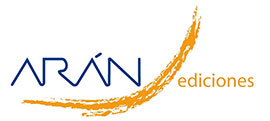Trabajo Original
Estimation of antioxidants dietary intake in wet age-related macular degeneration patients
 Número de descargas:
7258
Número de descargas:
7258
 Número de visitas:
3981
Número de visitas:
3981
 Citas:
0
Citas:
0
Compártelo:
Aims: The aim of this study was to estimate the intake of antioxidant nutrients in wet age-related macular degeneration (AMD) patients, a degenerative and progressive disorder of the macula, which is the central part of the retina, associated with central vision loss. Methods: A sample (n = 52, 78.9 ± 6.6 years old, 40.4% females and 59.6% males) of patients diagnosed of AMD was interviewed. Anthropometric measurements, two 24- h recalls, a semi-quantitative food frequency questionnaire and a general questionnaire incorporating questions related to socio-demographic and lifestyle variables were used. Results: Most of wet AMD patients showed inadequate antioxidant nutrient intake (< 2/3 of Recommended Dietary Intake, RDI), and more than 60% of patients showed serious deficient intake (< 1/3 RDI) of lutein and zeaxanthin. Most consumed antioxidant rich foods only represented low contributions to antioxidant intake. Although adiposity is a factor risk for AMD progression; the fat and saturated fatty acids (SFA) intake of study participants were higher than the recommendations; the prevalence of overweight was 61.9% men and 58.1% in women; and 83% of patients (90.5% men and 77.4% women) showed fat mass over the cut-off limits. Conclusions: The food pattern of wet AMD patients should be improved by means of an increase in the consumption of antioxidant rich foods, and a decrease in SFA rich foods.
Palabras Clave: Antioxidants. Wet age-related macular degeneration. Lutein. Zeaxanthin.
Artículos Relacionados:
Trabajo Original: Efecto de la glutamina en el estrés oxidativo y la inflamación en un modelo de rata con insuficiencia hepática fulminante
Elizângela Gonçalves Schemitt , Josieli Raskopf Colares , Renata Minuzzo Hartmann , María Isabel Morgan-martins , Cláudio Augusto Marroni , M. Jesús Tuñón , Norma Possa Marroni
Trabajo Original: La suplementación con antioxidantes durante el tratamiento oncológico no tiene efecto sobre la recurrencia de cáncer cervicouterino
Karolina Álvarez-altamirano , Alma Nubia Mendoza-hernández , Carolina Carcoba-tenorio , José Antonio García-garcía , Vanessa Fuchs-Tarlovsky
Trabajo Original: Antioxidantes, especies reactivas de oxígeno y daño oxidativo asociado a la presencia de plaguicidas organoclorados en la leche materna
Patricia Carolina Castillo-castañeda , Ramón Gaxiola-robles , Lía Celina Méndez-rodríguez , Vanessa Labrada-martagón , Tania Zenteno-savín
Artículo Especial: Pautas nutricionales en prevención y control de la hipertensión arterial
Rosa M. Ortega Anta , Ana Isabel Jiménez-Ortega , José Miguel Perea Sánchez , Esther Cuadrado Soto , Ana M. López Sobaler
Artículo Especial: Influencia del estado nutricional sobre el padecimiento de asma en la población
Elena Rodríguez-Rodríguez , Paula Rodríguez-rodríguez , Liliana Guadalupe González-Rodríguez , Ana María López Sobaler
Revisión: Los antioxidantes en el proceso de patologías oculares
Ana Fernández-araque , Andrea Giaquinta Aranda , Abel Rojo Aragüés
Carta Editor: Réplica: “los antioxidantes en el proceso de patologías oculares: revisión”
Ilya A. Volchegorskii , Elena V. Tur
Trabajo Original: El huevo como fuente de antioxidantes y componentes protectores frente a procesos crónicos
Aránzazu Aparicio , María Dolores Salas-González , Esther Cuadrado-Soto , Rosa M. Ortega , Ana M. López-Sobaler
Trabajo Original: Actividad antioxidante y antinflamatoria in vitro de extractos de chaya (Cnidoscolus aconitifolius (Mill.) I.M. Johnst)
Ulil Us Medina , Maria del Carmen Millán Linares , Victor Arana Argáez , Maira Rubi Segura-Campos
Revisión: El papel del resveratrol sobre el estrés oxidante inducido por metales pesados
Tonancy Nicolás-Méndez , Alda Rocío Ortiz-Muñiz , Víctor Manuel Mendoza-Núñez , María del Carmen García-Rodríguez
Trabajo Original: Análisis del perfil bioquímico y antropométrico, y de la ingesta de micronutrientes antioxidantes en pacientes con hipertensión arterial resistente
Priscila Stefani Vallejos Vildoso , Jorge da Silva Pinho Jr , Ana Paula Azevedo de Mattos , Gabrielle de Souza Rocha , Sergio Girão Barroso , Grazielle Vilas Boas Huguenin , Andréa Cardoso de Matos
Trabajo Original: Acute effect of a maximum incremental test until exhaustion on malondialdehyde and antioxidant vitamins in plasma and erythrocytes in athletes
Javier Alves Vas , Gema Barrientos , Víctor Toro Román , María Concepción Robles Gil , Marcos Maynar Mariño , Diego Muñoz Marín
Revisión: Antioxidantes y diabetes mellitus: revisión de la evidencia
Revisión: Efectos beneficiosos del chocolate en la salud cardiovascular
Trabajo Original: Efecto de la suplementación con antioxidantes sobre el estrés oxidativo y la calidad de vida durante el tratamiento oncológico en pacientes con cáncer cérvico uterino
Trabajo Original: Implicación de los componentes antioxidantes del huevo en la protección macular y la mejora de la visión
Elena Rodríguez-Rodríguez , Aránzazu Aparicio , Laura M. Bermejo , Rosa M. Ortega , Ana M. López-Sobaler
Revisión: Dietary fibre and cardiovascular health
Trabajo Original: El té verde en la quimioprevención in vivo del daño genotóxico inducido por metales cancerígenos (cromo [VI])
Trabajo Original: Association between dietary antioxidant quality score (DAQs) and bone mineral density in Spanish women
Revisión: Propiedades funcionales y beneficios para la salud del licopeno
Revisión: Compuestos polifenólicos y capacidad antioxidante de especias típicas consumidas en México
Trabajo Original: Estrés oxidativo; estudio comparativo entre un grupo de población normal y un grupo de población obesa mórbida
Trabajo Original: Dried apples enriched with mandarin juice by vacuum impregnation improve antioxidant capacity and decrease inflammation in obese children
Trabajo Original: Effects of supplementation of antioxidant vitamins and lipid peroxidation in critically ill patients
Trabajo Original: Effects of a low-fat diet with antioxidant supplementation on biochemical markers of multiple sclerosis long-term care residents
Revisión: Micronutrients influencing the immune response in leprosy
Trabajo Original: The relationship between serum vitamin A and breast cancer staging before and after radiotherapy
Revisión: Importancia de los aspectos nutricionales en el proceso inflamatorio de pacientes con artritis reumatoide; una revisión
Trabajo Original: Antioxidant responses of damiana (Turnera diffusa Willd) to exposure to artificial ultraviolet (UV) radiation in an in vitro model; part I; UV-C radiation
Trabajo Original: Antioxidant responses of damiana (Turnera diffusa Willd) to exposure to artificial ultraviolet (UV) radiation in an in vitro model; part II; UV-B radiation
Trabajo Original: Effects of quercetin on polychlorinated biphenyls-induced liver injury in rats
Trabajo Original: Defensas antioxidantes en leche materna en relación al número de gestas y a la edad de las madres
Trabajo Original: Impact of cooked functional meat enriched with omega-3 fatty acids and rosemary extract on inflammatory and oxidative status; A randomised, double-blind, crossover study
Revisión: ¿Son efectivos los suplementos antioxidantes en la disminución del dolor muscular tardío? Una revisión sistemática
Revisión: Taninos hidrolizables; bioquímica, aspectos nutricionales y analíticos y efectos en la salud
Revisión: El mango: aspectos agroindustriales, valor nutricional/funcional y efectos en la salud
Trabajo Original: Antioxidant capacity of leaf extracts from two Stevia rebaudiana Bertoni varieties adapted to cultivation in Mexico
Trabajo Original: Effect of computer radiation on weight and oxidant-antioxidant status of mice
Trabajo Original: Compliance of nutritional recommendations of Spanish pregnant women according to sociodemographic and lifestyle characteristics: a cohort study
Artículo Especial: Farmaconutrición en el paciente grave
Revisión: Spirulina y su efecto hipolipemiante y antioxidante en humanos: una revisión sistemática
Trabajo Original: Associations among SNPs in two addictive genes, food addiction, and antioxidant markers in recreationally active young women
Tuğba Küçükkasap Cömert , Özlem Muşlu , Duygu Ağagündüz
Revisión: Effect of dietary antioxidants on the risk of prostate cancer. Systematic review and network meta-analysis
Siyu Liu , Junhui Chen , Yiwen Wang , Yangyang Xu
Trabajo Original: Serum glutathione peroxidase is associated with nonalcoholic fatty liver disease in children and adolescents
Patricia Quadros dos Santos , Raquel Rocha , Carla Hilário da Cunha Daltro , Sandra Cristina de Souza Andrade , Helma Pinchemel Cotrim
Revisión: Componentes del huevo implicados en la función cognitiva
Ana M. López-Sobaler , Viviana Loria-Kohen , María Dolores Salas-González , Laura M. Bermejo , Aránzazu Aparicio
Artículos más populares
Revisión: Inteligencia artificial generativa ChatGPT en nutrición clínica: avances y desafíos
ChatGPT y otras herramientas de inteligencia artif...
Revisión: Suplementación con micronutrientes y sus beneficios: ¿por qué y cuándo?
Introducción: los micronutrientes participan en la...
-
Licencia creative commons: Open Access bajo la licencia Creative Commons 4.0 CC BY-NC-SA
https://creativecommons.org/licenses/by-nc-sa/4.0/legalcode




